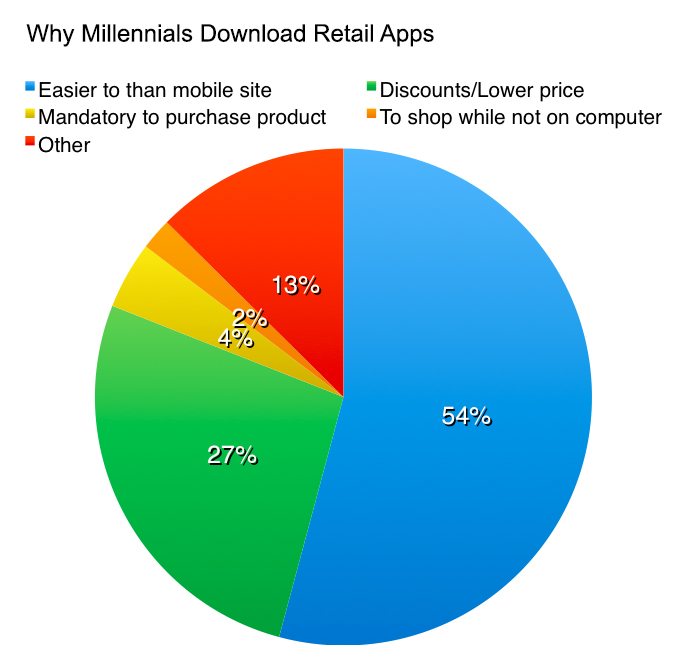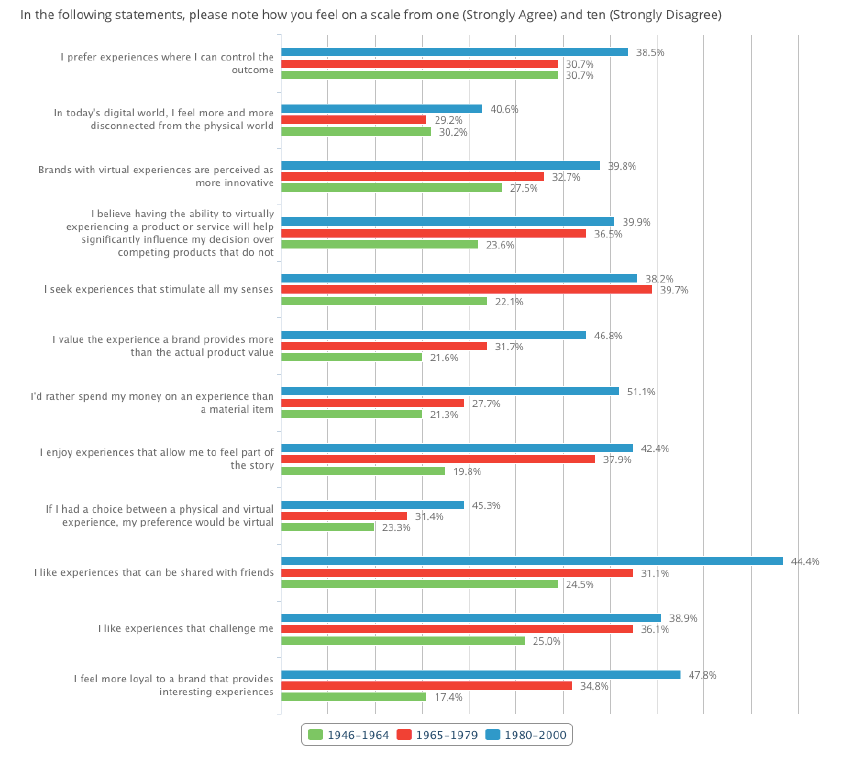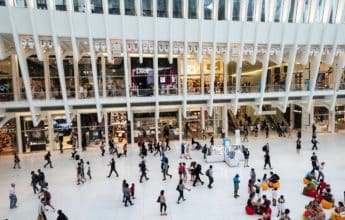With $200 billion in annual buying power and representing almost a quarter of the US population, it’s easy to see why millennials are such a coveted group for retailers. Given the potential for revenue, many retailers are putting an increased focus on more effectively engaging millennial shoppers.
Already, major brands are pivoting their customer segmentation strategies and taking steps to capture the attention and loyalty of millennials. QVC, with a customer base that is 60% in the 50+ category, acquired Zulily, which has a user base that is primarily under 50 (64%). Nordstrom acquired both Trunk Club and HauteLook, both startups that have been making waves with the millennial market.
Mobile is proving prolific in targeting millennials. With m-commerce becoming more pervasive and limitations in mobile web being realized, many retailers are turning to the development of native mobile apps. The major advantage is the ability to provide personalized, social shopping experiences – something that is piquing millennials interest, according to a recent survey by Kyle Wong for Forbes.
The survey found that:
- Almost half of millennials downloaded a shopping app on their phone
- 54% like these types of apps because the experience is better than mobile sites
- 27% shop using apps to take advantage of exclusive offers and discounts
What Mobile Shopping Apps Are Most Popular With Millennials? By Kyle Wong, via Forbes
However, it’s also noted that there is no one-size-fits-all solution, and each brand finds unique utility with their application depending on goals. As a result, there are a number of ways that retailers are using mobile apps to focus on reaching the millennial shopper.
Building Brand Loyalty & Affinity
Millennials are more likely to be “lifestyle” consumers (buying behaviour and relationship with brands closely tied to identity/lifestyle) than are their generational counterparts. This may mean that brand loyalty and affinity is more readily built, but achieving this relationship with the millennial shopper is nonetheless a difficult feat.
According to a survey by retail design firm Shikatani Lacroix:
- Millennials are very much experiential driven, and value immersive and interactive experiences
- 48% of millennials feel more loyal to a brand that provides interesting experiences
- 42% of millennials enjoy experiences that allow them to be part of the story
- 47% of millennials value the experience a brand provides more than the actual value of the product
The Future Of Millennial Brand Engagement. Shikitani Lacroix.
Retailers that are hoping to capture millennials through the use of mobile apps must focus first and foremost on building the experience their customers desire.
Personalization
Mobile personalization is imperative in creating the user experience millennials desire from mobile applications. Personalization is key to encouraging brand loyalty, increasing app usage, and providing an experience that will capture attention and engage the millennial shopper. Shoppers want an experience that is not only intuitive, but relevant to them.
Retailers are using a variety of metrics, big data, and predictive analytics to provide millennials these kinds of experiences. Intelligence ranging from predictive models to past preferences and behavior helps to personalize push notifications, power suggestion engines, and engage shoppers on a highly personal, contextual level. Retail mobile apps that are successful leverage this data in order to provide their millennial customers with an experience that speaks to them on an individual level.
In-Store Experience
While online and mobile channels are gaining in popularity, over 90% of business in retail is still derived from in-store customers. Millennials want the in-store experience, but they are seeking one that is more engaging than traditionally offered in brick and mortar locations. And importantly, they want the in-store experience to connect seamlessly with their mobile experience.
One of the most promising technologies in the pursuit of enhancing in-store experiences is beacons. Millennials – particularly millennial women – are more likely than their generational counterparts to use beacon-enabled apps. And because beacons are providing retailers with unprecedented abilities to personalize in-store shopping via location and contextual based messaging, they will prove pivotal in creating the kinds of experiences millennials are seeking.
Adding Value & Convenience
Millennials expect mobile apps to add both value and convenience to their shopping experiences. This is a general truth, but with the weight millennials place on experience, it’s even more important for this demographic.
Adding value and convenience through a mobile app can take many forms, but on a high-level, includes things like eliminating friction points in the path to purchase; using personalization to tailor the experience to the individual; and providing offers that are exclusive to the mobile app.
For example, features like deal-finders, in-app purchasing, and in-store locator are proving to strengthen retailers’ relationships with millennial consumers. The commonality among these features is the onus on adding a level of value and convenience via mobile apps that is not available on other channels.
Seamless Omni-Channel Experience
As already mentioned, millennial shoppers put heavy emphasis on experience, but not just on mobile. They expect every touch point with a brand to provide the seamless experience they desire, which means retailers need to be consistent across channels. The mobile experience must integrate with the in-store and the online, in terms of branding, value proposition, and functionality.
Where retailers are making significant inroads with millennials is allowing their app to be both a storefront and an in-store companion for users. The following use case better demonstrates this process:
- The user browses for products on their app
- The app informs them of relevant, local deals as well as item inventory (online or in-store)
- The user visits the in-store location and conducts additional product research, and the app maps the location of the product they desire
This is one scenario, but apps are also offering online-to-offline experiences including mobile ordering to in-store pickup and omni-channel shopping carts. Ultimately, the goal is to provide shoppers the ability to easily complete the path-to-purchase regardless of touchpoint – a characteristic that millennials increasingly expect from retailers.
Using Mobile To Attract The Millennial Shopper
For retailers that are pivoting their customer segmentation strategies to better target millennials, mobile apps are proving valuable. Millennials are more likely to use shopping apps, and increasingly expect that they are part of their engagement with brands. Retailers need to focus their mobile strategies on addressing what millennials value most: an improved shopping experience.
At its core, Clearbridge’s mobile app development process is designed to take the client’s vision and make it a reality. We provide rigorous, deep-dive product definition, strategy consultation, and product roadmapping to create an actionable plan for the design, development, and delivery of the custom mobile app.






